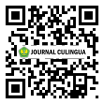LANGUAGE STYLE IN ANSWERING THE SPEECH ACT OF REQUEST FOR INFORMATION
Keywords:
Language Style, Speech Act of Request, Function, Social FactorsAbstract
Languages can be used in various ways to say the same thing, such as addressing and greeting others, informing and describing things, and also expressing how one’s feeling. This study aims at investigating the language style used in answering the speech act of requesting a piece of information. The problems were various in types and expressive functions. In collecting data, the writer used the instrument Discourse Completion Test (DCT) questionnaires that consist of the question “Where were you last Saturday night?”. The questionnaires were distributed to 40 students and asked them to complete the answer according to the situation given in the DCT. All of the data were observed, collected, classified, and analyzed qualitatively in a frame of discourse and socio-pragmatic theories. The results show language varieties in terms of formal and informal style with direct and indirect strategy; the varieties illustrate social meaning, speech functions as an expression of basic emotions, and politeness principles.
References
Akmajian, Demers, R. A., Farmer, A. K., & Harnish, R. M. (2010). Linguistics. An Introduction to Language and Communication (6th ed.). Cambridge: The MIT Press.
Austin, J. L. (1962). How to Do Things with Words. London: Oxford University Press.
Borlongan, A. M. (2012). Reflecting on the Use of Code-Switching in Philippines Education Today. TESOL Journal, 7, 78–80.
Cluncy, G. (2018). Students’ View on the Use of L1 in the Foreign Language Classroom. TESOL International Journal., 13(1).
Cutting, J. (2002). Pragmatics and Discourse: Aresource book for students. New York: Routledge, Taylor & Francis Group.
Fiehler, R. (2002). How to do emotions with words: Emotionality in conversation. In The verbal communication of emotions: an interdisciplinary perspective (pp. 79–106). New Jersey: LEA.
Holmes, J. (2001). An Introduction to Sociolinguistics (2nd ed.). London: Longman.
Holmes, J. (2013). An Introduction to Sociolinguistics. 4th edition. In Pearson Education Limited. https://doi.org/10.1525/jlin.2003.13.2.252
Leech, G. (1974). Semantics. England: Penguin Books Ltd.
Parrot, W. (2001). Emotion in Social Psychology: Essential Reading. New York: Psychology Press.
Romaine, S. (1994). Language in Society: An Introduction to Sociolinguistics. Oxford: Oxford University Press
Searle, J. R. (1976). A classification of illocutionary acts. Language in Society, 5(1), 1–23. https://doi.org/10.1017/S0047404500006837
Strauss, S., & Feiz, P. (2014). Discourse analysis: Putting our worlds into words. In Discourse Analysis: Putting our Worlds into Words. New York: Routledge. https://doi.org/10.4324/9780203121559
Yanti, Y. (2013). Verbal Communication of Emotions?: A Case Study of Obama-McCain Presidential Debates. Jakarta: Atma Jaya University.
Yanti, Y. (2016). Sadness Expressions in English and Minangkabau: What and How? The International Conference on Language, Society, and Culture (ICLCS) on November 24th-25th, 2015 by P2KK-LIPI, 1102–1109. Jakarta: P2KK-LIPI.
Yanti, Y. (2020). Kata dalam Berbagai Domain. Kumpulan Karangan Tersebar. Padang: LPPM Universitas Bung Hatta.
Yanti, Y. (2021). Gender and Communication: Some Features of Women’s Speech. In Journal of Cultura and Lingua. 2 (1), (33-38). Retrieved from https://culingua.bunghatta.ac.id/index.php/culingua.
Downloads
Published
Issue
Section
License
Copyright (c) 2022 Yusrita Yanti

This work is licensed under a Creative Commons Attribution 4.0 International License.









